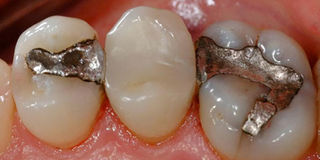When is the best time to fill your tooth?

What you need to know:
It was, however, distinct to the colour of the teeth. This type of filling material is now being phased out because it was also found to have life-long associated health risks
Filling a tooth with a cavity (hole) is one way to prevent it from further damage or pain. When this is done, it also helps to improve the functionality of a person’s teeth.
But the kind of filling that a person does depends on several factors, including the tooth that has been affected and the extent of the damage.
The human tooth has three layers. These include the enamel, dentine and pulp. If the decay is still on the enamel, a person may not experience any pain either before or after treatment. For this type of early stage cavity, a permanent filling material is recommended. Previously, a person could easily tell a permanent filling material because all dentists used what is known as silver amalgam.
It was, however, distinct to the colour of the teeth. This type of filling material is now being phased out because it was also found to have life-long associated health risks.
It has been replaced with what is known as ceramic composite and glass ionomer. These are permanent filling materials, which have a close resemblance to actual teeth, making it difficult for a person to tell if a tooth has been filled or not.
Tooth sensitivity
For people who have cavities are at the dentine layer, there is an increased risk of the affected tooth becoming sensitive, especially after a person has consumed foods that are cold, or have high sugar content.
Food may also get stuck in the cavity to cause bad breath. At this level, a dentist can use a permanent filling material. However, before this is done, a small layer of temporary cement may be put to protect the pulp.
When a person has deep dentinal cavities, treatment will include applying a temporary filling material, which is white or cream in colour.
This temporary procedure usually lasts for four to six weeks, before a permanent filling is done.
It is recommended that filling should be done when the decay is still at the enamel and dentine stages. Beyond this period, a person may have to undergo root canal treatment, which is more expensive.
This, therefore, calls for regular dental check-up.
The writer is a dentist
[email protected]


